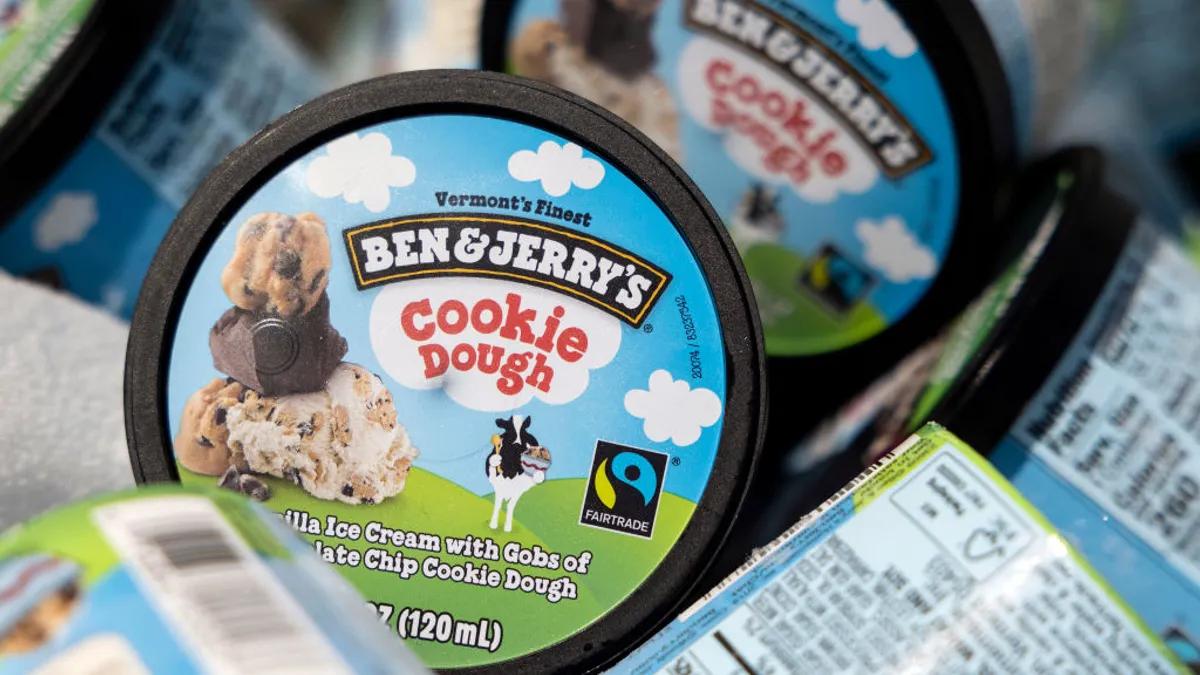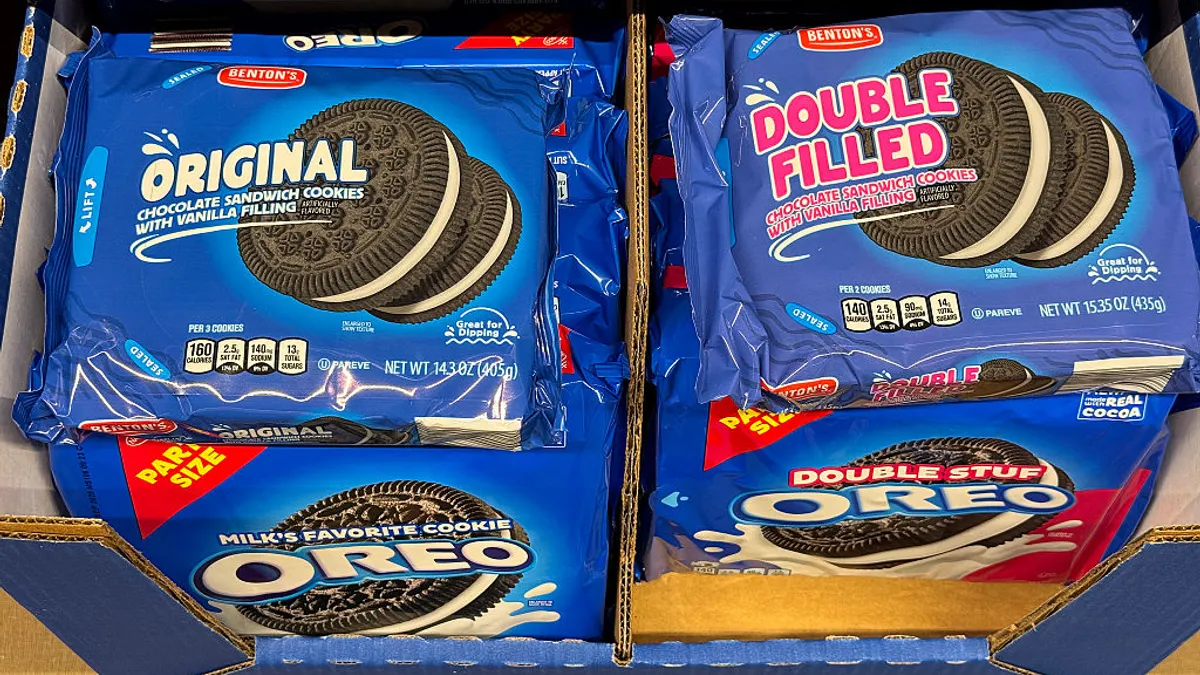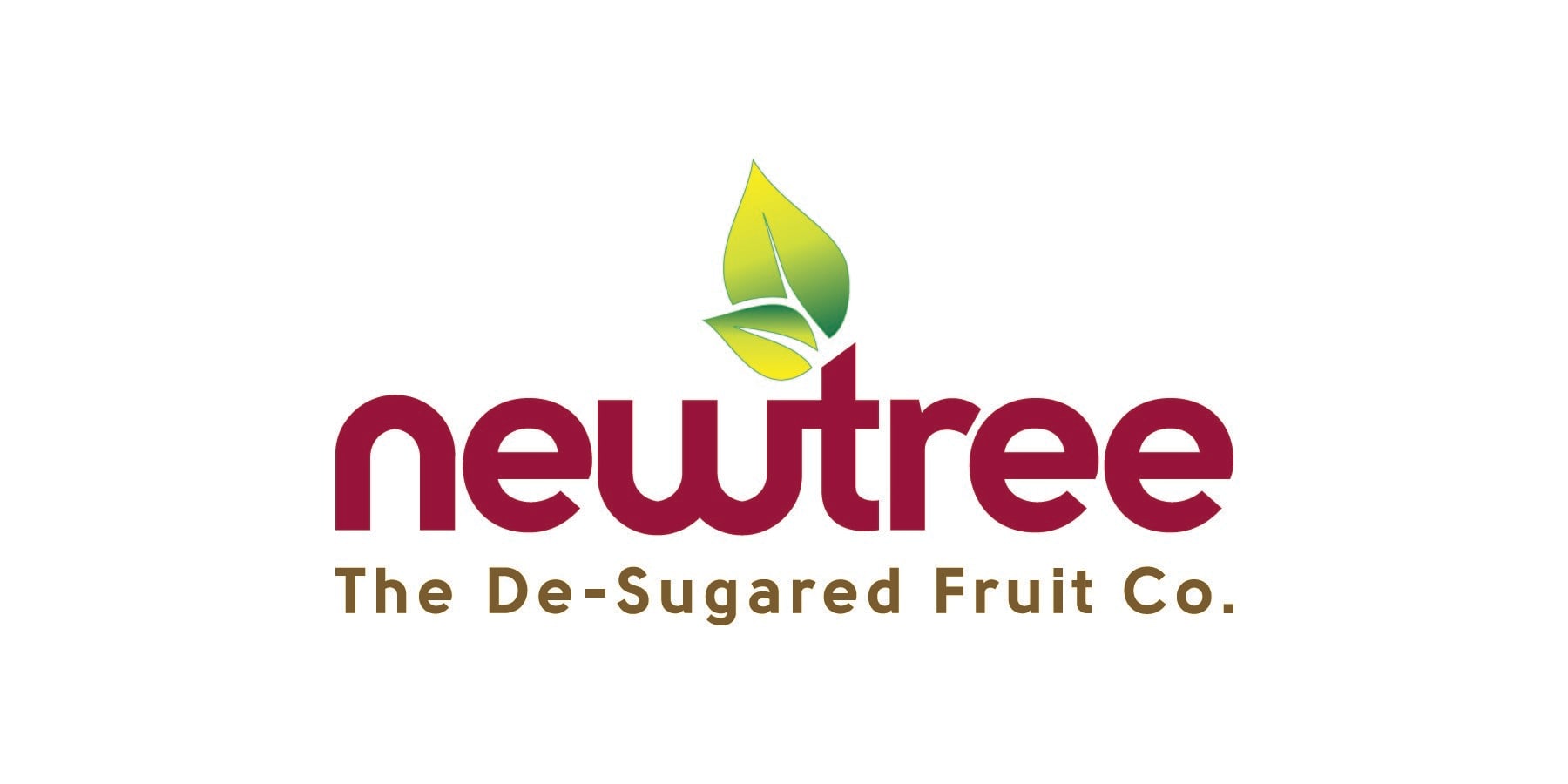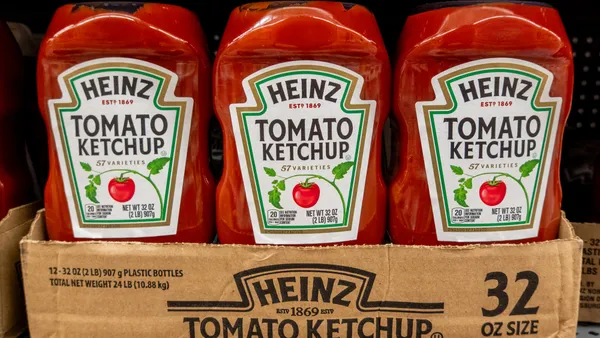Dive Brief:
- Nestle has established a more ambitious mid-single digit organic growth target and an underlying trading operating profit margin target of 17.5% to 18.5% by 2020 — up from about 16% in the first half of this year.
- During an investor seminar Tuesday in London, the Swiss company also said it plans to update its share buyback strategy announced in June, according to a statement. Nestle said in light of its "strong cash generation," it would accelerate buybacks by spreading them evenly over three years.
- While the company affirmed its continued focus on food and beverages, it also plans to retain its 23% stake in the L’Oréal cosmetics firm, which activist investor Dan Loeb had suggested it sell.
Dive Insight:
Nestle, a 112-year-old global company with a relatively staid reputation, has had to up its game lately due to pressure from Loeb and his hedge fund investment, along with the usual pressures to grow and innovate in today's uncertain food climate.
Those challenges have attracted outside attention. In June, Loeb’s Third Point hedge fund took its largest-ever initial bet on a public company with a $3.5-billion position in Nestle, or about 1.25% of the company's shares. The hedge fund has publicly outlined changes that the maker of Lean Cuisine, Nescafe and Butterfinger can make, including improving margins, innovating its core business and selling non-core assets.
“Nestle has fallen behind over the past decade in an environment where growth has slowed due to changes in consumer tastes and shopping habits, as well as an influx of new competition from smaller, local brands,” Third Point said in a June letter. “While its peers have adapted to this lower growth world, Nestle has remained stuck in its old ways.”
Nestle CEO Mark Schneider has been actively looking for ways to tighten the company's overall focus since he took over in January. Nestle announced in June that it was the main investor in the $77-million round of new funding in Freshly, a meal kit startup. It also has been exploring strategic options for its U.S. confectionery business, whose products including Nestle Crunch and Butterfinger, where the division lags behind market leaders Hershey and Mars.
"Nestle has a strong foundation, a clear path forward and a bright future," Schneider said in a statement. "We will grow by remaining at the forefront of consumer trends and offering the brands and products to meet people’s changing needs, especially their demand for a better, healthier life."
The challenges confronting Nestle are common throughout the food industry, where businesses are facing slowing growth as consumers flee processed foods in favor of fresher items made with all-natural ingredients. As the involvement by Loeb and his hedge fund shows, outside influences can force companies to overhaul their operations much faster than they originally intended — helping boost share prices and in some cases making them a more attractive takeover target.
Schneider indicated the company intends to add consumer healthcare as an additional growth platform and to continue focusing on nutrition, health and wellness to meet changing consumer demands. This underscores a more nimble approach that the new CEO ushered in with his recent arrival.
Nestle has been actively adjusting its product portfolio in line with this strategy, as shown by the recent investments in Blue Bottle Coffee, Sweet Earth and Freshly, as well as the decision to explore strategic options for its U.S. confectionery business, Schneider noted.
In its most recent earnings report in February, Nestle posted a 6% decline in net profits to $8.53 billion for fiscal 2016, with revenue growing just 0.8% to $89.47 billion. Organic growth increased 3.2% last year, and the company forecast increases of 2% to 4% for this year, so the new targets are encouraging. The company's next earnings report should indicate whether its myriad recent changes are working and help provide clarity to Loeb about what to do next with his investment.












